Mass Extinction
- Posted 11.21.06
- NOVA scienceNOW
(This video is no longer available for streaming.) Host Neil deGrasse Tyson joins a team of investigators hot on the trail of a mass murderer—one that knocked off its victims 250 million years ago when it wiped out the majority of life on our planet. Long before the dinosaurs, at the end of the Permian Period, something triggered Earth's most profound mass extinction and reset the evolution of life on this planet.
The clues suggest it was not the result of an asteroid impact, the likely cause of the dinosaur extinction later on. Could deadly bacteria have set off a chemical chain reaction that poisoned the Permian seas and atmosphere? As well as a fascinating whodunit, the story is a cautionary tale on the threat posed by modern-day global warming.
Transcript
MASS EXTINCTION
PBS Airdate: November 21, 2006
NEIL DEGRASSE TYSON: Hello, I'm Neil deGrasse Tyson, your host for NOVA scienceNOW.
We all know that Earth is brimming with life, all kinds of life, as it has been for most of the last 600 million years. But every now and then, something happens. Earth becomes a very unfriendly place, and most life can't survive. It's called mass extinction. We know it's happened over and over again, in the deep past, but we don't always know why.
In a remote Nevada desert, a team of investigators is trying to solve an old murder mystery.
SAM BOWRING OFF CAMERA: So yeah, this looks good.
NEIL DEGRASSE TYSON: And I mean old; the victims were knocked off about 250 million years ago, in an ancient mass extinction.
SAM BOWRING: Based on the fossil record, this is probably the most profound extinction of animal life.
DOUGLAS H. ERWIN (Smithsonian Institution): There's no other time, in the last 600 million years, that you wipe out 95 percent of all the species in the ocean.
NEIL DEGRASSE TYSON: Geologist Sam Bowring and paleontologist Doug Erwin think this hillside might be a scene of the crime. They're looking for clues to find out what caused the mysterious end of the geological time period known as the Permian.
PETER D. WARD (University of Washington): The Permian world, and the extinction that ended the Permian world, really reset the nature of life on this planet.
NEIL DEGRASSE TYSON: Paleontologist Peter Ward has spent years collecting fossils from the strange time of the Permian.
PETER WARD: Permian would have looked very different to us. Let's say we go back there, we look around: no flowers, no flowering plants; there's not even dinosaurs. This is before dinosaurs. There probably wasn't a single animal on the planet with fur.
NEIL DEGRASSE TYSON: True mammals hadn't evolved yet, but their ancestors were there, animals like this Lemurosaurus.
PETER WARD: This is a mammal-like reptile, probably small-dog size. This animal is a carnivore. It really has a dog-like appearance. We can see this great big piercing tooth.
NEIL DEGRASSE TYSON: Clearly making him a predator.
PETER WARD: Yeah, but this entire group dies out in the extinction itself.
NEIL DEGRASSE TYSON: There were creatures right out of a science fiction movie, like plant-eating Lystrosaurs, and, ruining their day, monstrous Gorgons.
The extinction ravaged the oceans, once filled with exotic animals. But then, about 250 million years ago, almost everything on sea and land died. So, who's the culprit? What could kill off so much life? Could it be climate change? Global warming? Or would you need something from out of this world?
There've been at least five major extinctions in the last 600 million years. Most of us have heard of one, at the close of the Cretaceous, ending of the reign of the dinosaurs. That happened about 65 million years ago, when an asteroid the size of Mount Everest slammed into our planet, leaving a giant crater near what is now Mexico.
So we know the dinosaurs were knocked off by a giant rock that fell from the sky; and we also know that these rocks hit Earth from time to time; so when we try to figure out what caused all the mass extinctions of the past, shouldn't it just make sense that they'd also be caused by comets and asteroids?
PETER WARD: I went into this controversy fully expecting to find all the evidence for impact. And at the end of the Cretaceous, we see this. We see lots of comet material or asteroid material.
NEIL DEGRASSE TYSON: Not to mention the crater, of course.
PETER WARD: Not to mention the crater, least of all the crater.
NEIL DEGRASSE TYSON: So you've got the smoking gun—the gun, and the bullets, and, of course, the dead bodies, I guess.
PETER WARD: Well, the only thing we have at the end of the Permian is...are the dead bodies.
NEIL DEGRASSE TYSON: So, if asteroids and extinction don't necessarily go hand in hand, what does Earth do with all those asteroids that come our way?
SAM BOWRING: The Earth is hit by asteroids all the time—big ones—doesn't cause mass extinction. Why not look for something a little bit different?
NEIL DEGRASSE TYSON: But where can we find that something?
SAM BOWRING: Here's the boundary, right here.
NEIL DEGRASSE TYSON: This Nevada hillside might be one of a few existing Permian crime scenes in North America, but the team must date the rocks, to see if they're the same age as the extinction.
SAM BOWRING: Timing is everything. You have to have rocks that can be dated precisely.
NEIL DEGRASSE TYSON: Back at the lab, the team breaks down the rock. Rare elements reveal when the rock formed. The results? About 250 million years old.
So this is a crime scene. But where's the killer? What kind of a disaster, other than an asteroid, could destroy so much life?
One of the prime suspects is an ancient group of volcanoes, now dormant, whose remains lie in eastern Russia. Known as the Siberian Traps, these were no ordinary volcanoes.
DOUG ERWIN: Most people, when they think of volcanoes, think of Mount St. Helens or Mount Pinatubo. That's nothing like these volcanic episodes.
NEIL DEGRASSE TYSON: The Siberian Traps oozed lava for up to a million years, smothering an area about the size of the continental United States, in some places, over a mile deep.
SAM BOWRING: That is a lot of lava.
NEIL DEGRASSE TYSON: Sure is. But still, the lava was in Siberia, not in the rest of the world, not in the whole ocean. So why would almost everything on Earth die?
Marine geochemist Lee Kump thinks he's found the answer. The key is in how big volcanoes could change the environment, including the chemistry of the Permian ocean.
To test his idea, he designed a computer model to simulate the Permian world.
LEE KUMP (The Pennsylvania State University): So the model starts out like a weather forecasting model or a climate model: it has the winds; there's the ocean currents that are driven by those winds; there are temperature variations. But the model also has life in it.
NEIL DEGRASSE TYSON: All plants and animals and bacteria are, in fact, chemical factories, taking in nutrients and spewing out waste products. With life's chemistry factored in, Lee's model reveals a disturbing chain of events.
It all starts with the Siberian Traps, but the trigger is not the incessant flow of lava, which would burn and bury any life nearby. No, the real culprits are the gases that the volcanoes spew into the atmosphere, including one we've all heard of lately, carbon dioxide.
LEE KUMP: Carbon dioxide that's spewing out of these volcanoes is a greenhouse gas.
NEIL DEGRASSE TYSON: Greenhouse gases trap the Sun's heat in our atmosphere, forcing the whole Earth to warm up. Of course, that's global warming. But it doesn't end there. Global warming would have heated the Permian ocean, and when it did, ocean chemistry would have changed dramatically.
LEE KUMP: There's a difference between warm and cold water. Cold water can hold more gas than can warm water. And so this is, fundamentally, why we drink champagne and beer and soda cold, rather than warm.
NEIL DEGRASSE TYSON: What's true for champagne, beer or soda is also true for the ocean and one of its most important gases, oxygen.
LEE KUMP: Cold water can hold a lot of oxygen. Warm water can't hold much oxygen.
NEIL DEGRASSE TYSON: And if water loses its oxygen, things can go from bad to worse.
Lee and his research team have seen this firsthand, at Green Lakes in central New York State. This lake is narrow and deep, and there's little wind. As a result, the deeper waters have lost their oxygen.
LEE KUMP: It's safe to swim in this lake, as long as you stay above 70 feet.
NEIL DEGRASSE TYSON: Below that, the oxygen-free water has attracted a deadly form of bacteria.
LEE KUMP: There are bacteria that can thrive under those conditions, and those bacteria produce hydrogen sulfide. Hydrogen sulfide is a very toxic substance, and so, the deep part of this lake is highly poisonous.
NEIL DEGRASSE TYSON: It's also bright pink.
LEE KUMP: Here you go.
When we bring these samples to the surface, of course, they're rich in hydrogen sulfide. They stink like rotten eggs, and they're poisonous.
KATJA (Research team member): Oh, that stinks! Yuck.
NEIL DEGRASSE TYSON: The bright pink color comes from another microbe, purple sulfur bacteria, that thrive in hydrogen sulfide. Bacteria like these can leave chemical traces in ancient rocks. In fact, such traces have been found in some rocks dating to the Permian extinction.
For Lee, it's a sign that the Permian ocean might have resembled this poisonous lake.
LEE KUMP: This lake is a microcosm of what we think the ocean was like in the late Permian.
NEIL DEGRASSE TYSON: According to Lee's computer model, over time, the oceans would have become so full of hydrogen sulfide that in some spots, the deadly gas would have bubbled right out into the atmosphere, killing millions of creatures, not only in the sea, but also on the land.
The deadly microbes under suspicion aren't rare. They thrive wherever there's water and no oxygen, as Peter Ward showed me, on an ordinary beach, at low tide.
PETER WARD: Even here—we're on a beach in Seattle—we only have to go down about two inches to see, sort of, the next step, in what we think is this extinction mechanism. There. Smell that.
NEIL DEGRASSE TYSON: Ooh, yeah, smells like rotten eggs.
PETER WARD: Rotten eggs. So, this is hydrogen sulfide from bacteria in the sediment. So, let's just take those bacteria, put them in the ocean and have untold tons of them.
NEIL DEGRASSE TYSON: Having...have it run amok.
PETER WARD: Everywhere. The oceans are bacteria filled. And they're producing that same nasty rotten-egg smell, but in sufficient quantity, not just to kill stuff in the water, but enough goes in the atmosphere to kill land life.
NEIL DEGRASSE TYSON: So it burps up this noxious gas.
PETER WARD: Big bubbles come out of the oceans, and it will kill off animals and plants.
NEIL DEGRASSE TYSON: And so, an extinction that began in the ocean works its way to the land.
PETER WARD: Exactly. It's horrible.
NEIL DEGRASSE TYSON: So it starts with volcanoes spewing carbon dioxide; next step: global warming. The oceans heat up and lose their oxygen, nasty bacteria take over, burping out lots of poisonous gas. End result? Mass extinction.
Peter Ward is convinced this was the scenario, not just for the Permian, but for most of the other big extinction events, too.
PETER WARD: What really looks like a universal way that this has happened is this global warming, leading to this terrible gas chamber atmosphere killing off life in the ocean and land. It's not so much stuff from space that gets you; it's your own planet.
NEIL DEGRASSE TYSON: The Nevada rocks offer some support for the idea, at least for the Permian. This whole area was once at the bottom of an ocean, and tests on the rocks have revealed that, in the years leading up to the extinction, the deep ocean water here had lost its oxygen.
The next step will be to probe these rocks for telltale signs of that nasty bacteria and hydrogen sulfide.
Until there's more evidence, the detectives won't all agree that the case is closed. But these experts are convinced that Earth's own environment could be the perpetrator of a mass extinction, whether it's 250 million years ago or right now.
SAM BOWRING: We know, for a fact, that there have been huge changes in the environment, in climate change. That could happen again today, no asteroids required. The Earth is an incredibly dynamic place, lots happening. We have to understand those changes if we want to survive.
Credits
Mass Extinction
- Edited by
- Nathan Hendrie
- Written, Produced and Directed by
- Julia Cort
NOVA scienceNOW
- Executive Producer
- Samuel Fine
- Executive Editor
- Neil deGrasse Tyson
- Senior Series Producer
- Vincent Liota
- Supervising Producer
- Stephen Sweigart
- Development Producer
- Vinita Mehta
- Program Editor
- David Chmura
- Post Production Supervisor
- Win Rosenfeld
- Associate Producers
- Anthony Manupelli
Mica McCarthy
John Pavlus
Mary Robertson
Shimona Shahi
Anna Lee Strachan - Unit Manager
- Candace White
- Production Secretary
- Fran Laks
- Animator
- Brian Edgerton
- Compositor
- Yunsik Noh
- Interns
- Karen Schrock
Alison Snyder
Brian Stillman - Music
- Rob Morsberger
- NOVA scienceNOW Series Animation
- Edgeworx
- Camera
- Sam Ameen
James Ball
Peter Bonilla
Boyd Estus
Mark Knobil
Al Lopez
Sam Painter - Sound Recordists
- Frank Coakley
Dino Distefano
Mike Filosa
Doc Jones
Darrell Mitchell
Hing Ng
Charles Tomaras - Audio Mix
- John Jenkins
- Colorist
- Jim Ferguson
- Animation
- Vincent Liota
Sputnik - Special Thanks
- ANG Newspapers
Jim Crowley
MIT Robotic Life Group
National Museum, Bloemfontein, South Africa
Natural Resources Canada
Eric Sperling
Jude Swales
Stan Winston Studios - Archival Material
-
ABC News Videosource
American Red Cross
BBC Motion Gallery
Corbis
The Egypt Exploration Society
Getty Images
Cynthia Goldsmith
Greg Hensley Productions
Indiana State Museum and Historic Sites
Iowa State University Library/Special Collections Department
Keystone-Mast Collection, UCR/California Museum of Photography,
University of California at Riverside
National Archives
The National Museum of Health and Medicine, Armed Forces Institute of Pathology, Washington, D.C.
Sam Ogden/Photo Researchers
Louie Psihoyos/Science Faction
Quill Graphics
San Francisco Chronicle
timelapse.com
US Naval Historical Center
University of Michigan Papyrus Collection - Neil deGrasse Tyson
- is director of the Hayden Planetarium in the Rose Center for Earth and Space at the American Museum of Natural History.
- NOVA Series Graphics
- yU + co.
- NOVA Theme Music
- Walter Werzowa
John Luker
Musikvergnuegen, Inc. - Additional NOVA Theme Music
- Ray Loring
- Post Production Online Editor
- Spencer Gentry
- Closed Captioning
- The Caption Center
- NOVA Administrator
- Ashley King
- Publicity
- Eileen Campion
Anna Lowi - Researcher
- Gaia Remerowski
- Production Coordinator
- Linda Callahan
- Unit Manager
- Carla Raimer
- Paralegal
- Raphael Nemes
- Legal Counsel
- Susan Rosen Shishko
- Assistant Editor
- Alex Kreuter
- Associate Producer, Post Production
- Patrick Carey
- Post Production Supervisor
- Regina O'Toole
- Post Production Editor
- Rebecca Nieto
- Post Production Manager
- Nathan Gunner
- Producer, Special Projects
- Susanne Simpson
- Coordinating Producer
- Laurie Cahalane
- Senior Science Editor
- Evan Hadingham
- Senior Series Producer
- Melanie Wallace
- Managing Director
- Alan Ritsko
- Senior Executive Producer
- Paula S. Apsell
This material is based upon work supported by the National Science Foundation under Grant No. 0229297. Any opinions, findings, and conclusions or recommendations expressed in this material are those of the author(s) and do not necessarily reflect the views of the National Science Foundation.
NOVA scienceNOW is a trademark of the WGBH Educational Foundation.
NOVA scienceNOW is produced for WGBH/Boston by NOVA.
© 2006 WGBH Educational Foundation
All rights reserved
- Image credit: (pelycosaurs) Courtesy University of Michigan, Exhibit Museum of Natural History
Participants
- Samuel Bowring
- MIT eaps.mit.edu/research/group/IGLab/
- Douglas Erwin
- Smithsonian Institution www.si.edu/ofg/Staffhp/erwind.htm
- Lee Kump
- Penn State www.geosc.psu.edu/~kump/
- Peter Ward
- University of Washington
Related Links
-
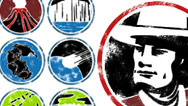
Permian Prime Suspects
Examine a lineup of possible culprits in the Permian extinction and cast your vote in our poll.
-
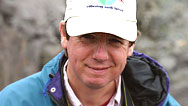
Mass Extinction: Expert Q&A
The Smithsonian's Doug Erwin answers questions about the Permian and other mass extinctions.
-
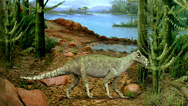
Extinction Happens
MIT geologist Sam Bowring muses on mass extinctions and why we can't take Earth's hospitable climate for granted.
-
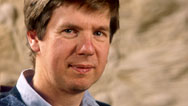
The Permian Puzzle
Paleontologist Doug Erwin offers his take on what caused the Permian extinction.
-
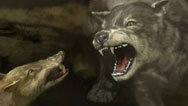
End of the Big Beasts
Overhunting, climate change, disease, and now a comet. What did kill off the megafauna?
-

Mass Extinction
Learn about a chain of events which may have caused Earth's greatest mass extinction 250 million years ago.



